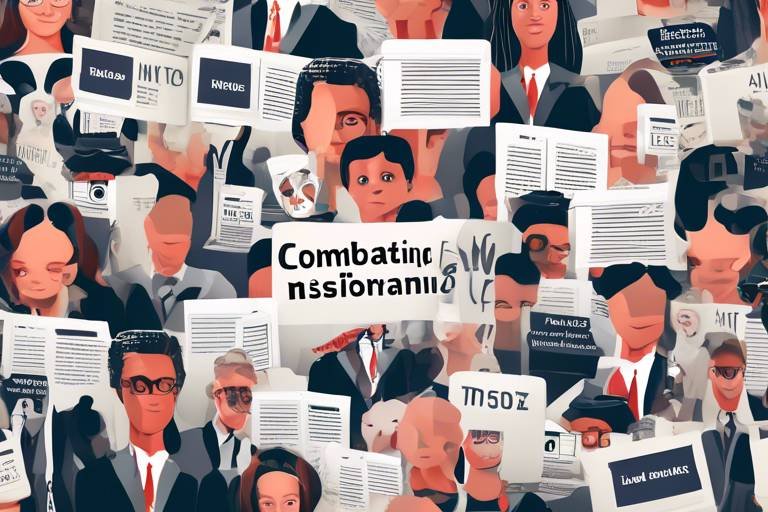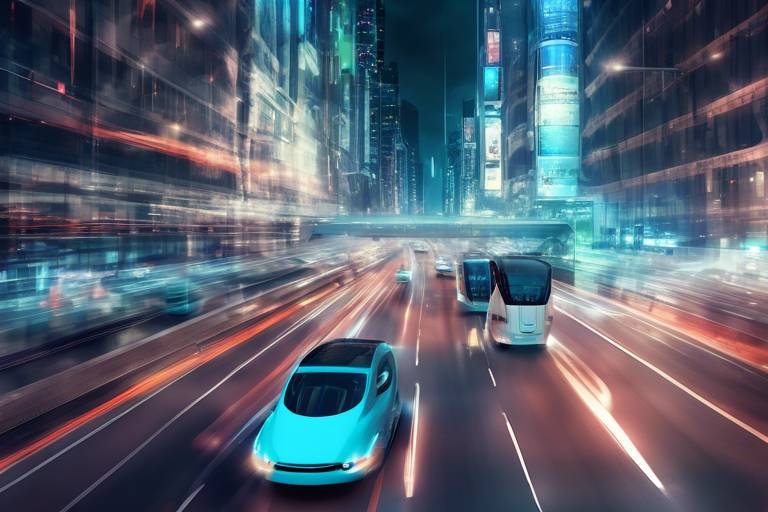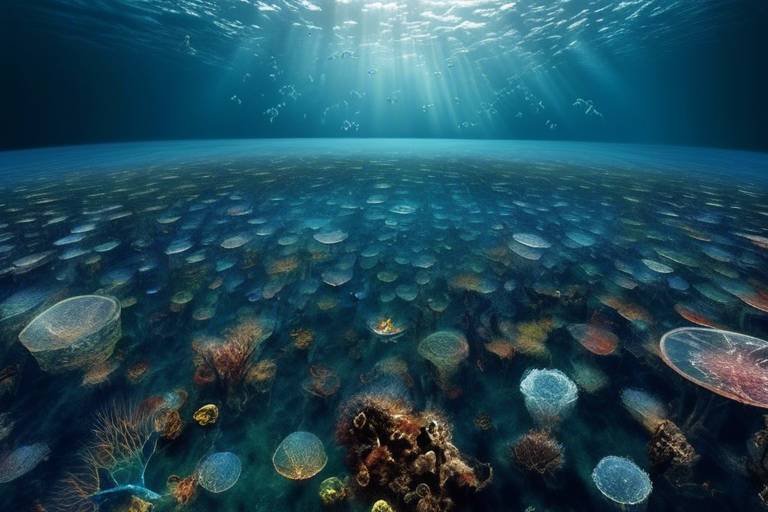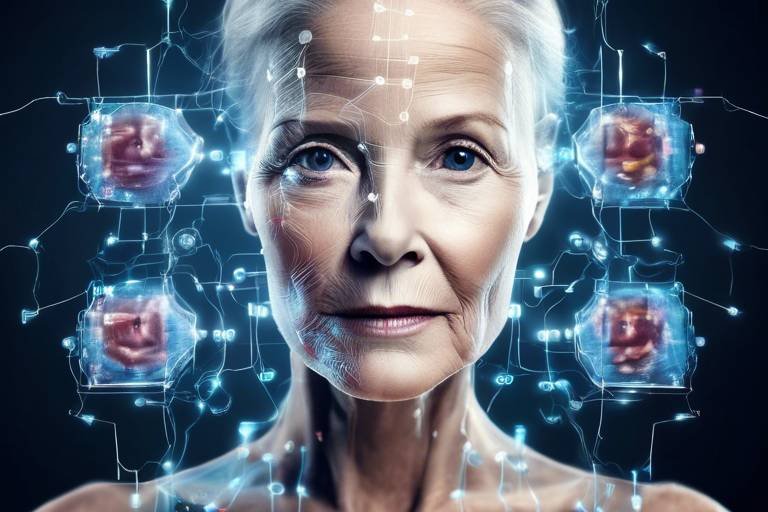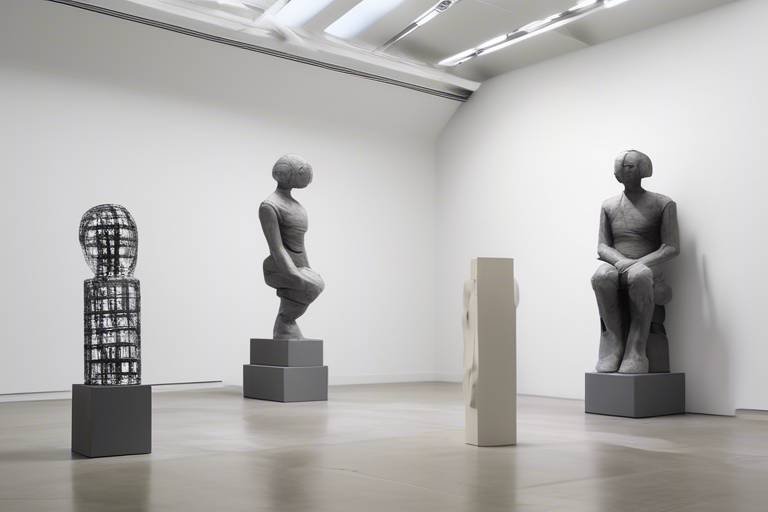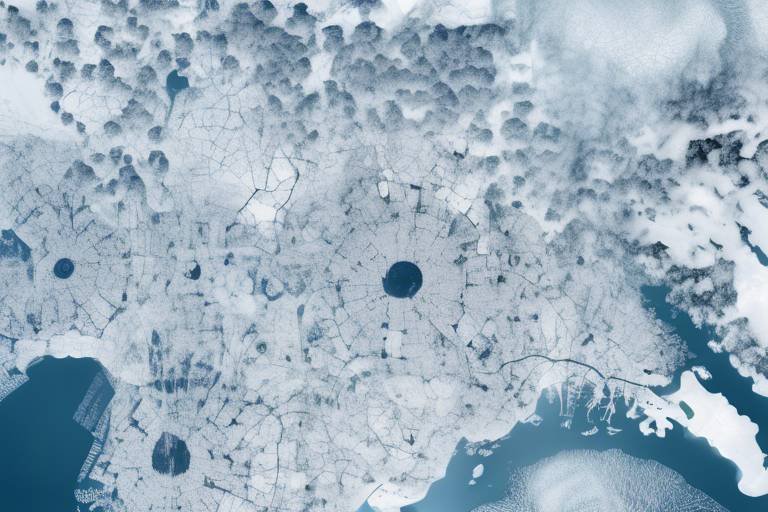Invasion of AI in the World of Comics and Graphic Novels
Welcome to the exciting frontier where artificial intelligence meets the vibrant world of comics and graphic novels! The landscape of storytelling is changing faster than a speeding bullet, and it's all thanks to the infiltration of AI technology. Imagine a world where creativity knows no bounds, where artists can push their limits and explore new realms of imagination with the help of intelligent algorithms. This article takes you on a journey through the transformative impact of AI on the comics industry, examining how it reshapes creative processes, enhances storytelling, and redefines the future of visual narratives.
AI technology is not just a buzzword; it's becoming a powerful tool that artists and writers in the comic industry are embracing. Just like a trusty sidekick, AI is revolutionizing how creators approach their work, allowing them to focus on what they do best—telling stories. With AI, the possibilities are endless. From generating ideas to assisting in the artistic process, this technology is changing the game. Have you ever thought about how much time artists spend on tedious tasks? Well, AI is here to help streamline those processes, freeing up valuable time for creativity!
One of the most fascinating aspects of AI in comics is its role in art creation. Artists are leveraging AI tools to produce stunning visuals that captivate audiences. Imagine having a digital assistant that helps you brainstorm ideas or enhances your sketches with a few clicks. This is the reality for many comic creators today. AI is not just a tool; it's a partner in creativity, enhancing artistic expression and making the entire process more efficient.
Generative art algorithms are rapidly gaining traction among comic artists. These algorithms can produce unique styles and effects that were once time-consuming or nearly impossible to achieve manually. Picture this: an artist can input specific parameters into an AI program, and voilà! They receive a plethora of artistic styles to choose from, each one uniquely crafted. This opens up new avenues for experimentation and creativity, allowing artists to explore uncharted territories in their work.
Another exciting development is the use of style transfer techniques. This technology allows artists to apply the aesthetics of one artwork to another, creating a beautiful blend of styles. For instance, imagine a comic that combines the vibrant colors of a Van Gogh painting with the sharp lines of a modern graphic novel. The result? A visually stunning masterpiece that stands out in a crowded market. This innovative approach not only enhances the visual appeal of comics but also encourages artists to think outside the box.
Character design is another area where AI is making waves. Creators can utilize AI to analyze existing character designs and generate new concepts that are diverse and unique. This means that characters can be developed with more depth and variety, reflecting the rich tapestry of human experience. The ability to generate a multitude of character designs in a fraction of the time allows creators to focus on storytelling and character arcs, enriching the overall narrative.
But AI's influence doesn't stop at visuals; it's also reshaping narrative structures. Imagine a world where writers can experiment with different plotlines and character developments using AI-driven tools. These tools can analyze reader preferences and suggest narrative twists that keep audiences engaged. This means that comic book stories can evolve in real-time, adapting to the tastes of readers and offering a more personalized experience. The future of storytelling is here, and it's more interactive than ever!
As we embrace the potential of AI in the comics industry, it’s crucial to address the ethical implications that come with it. With great power comes great responsibility, and the integration of AI raises important questions about authorship, originality, and job security. Are we ready to navigate these complex waters?
With the rise of AI-generated content, copyright and ownership issues are becoming increasingly complex. Who owns the rights to an artwork created by an AI? Is it the artist who input the parameters, the AI itself, or perhaps the company that developed the AI? These questions are sparking heated debates in legal circles and among creators alike, as the lines between human and machine-generated art blur.
Moreover, the rise of AI tools may lead to job displacement for traditional artists and writers. As AI becomes more capable, will there still be a place for human creativity in the industry? This prompts discussions about the future of employment in the creative sector. Will artists need to adapt and learn how to work alongside AI, or will they find themselves sidelined? The answers to these questions will shape the landscape of comics for years to come.
Looking ahead, the collaboration between AI and human creativity promises to reshape the comics landscape. This partnership is not about replacing artists but rather enhancing their capabilities and opening new avenues for innovation. As we explore this brave new world, we can expect to see exciting possibilities for storytelling that challenge our perceptions and engage our imaginations in ways we never thought possible.
- What is AI-assisted art creation? AI-assisted art creation involves using artificial intelligence tools to help artists generate visuals, streamline their artistic processes, and enhance creativity.
- How does AI affect character design in comics? AI can analyze existing character designs and generate new, diverse concepts, allowing for richer character development.
- Are there ethical concerns with AI in comics? Yes, ethical concerns include copyright issues, authorship questions, and potential job displacement for traditional artists.
- What does the future hold for comics with AI? The future promises a collaborative relationship between AI and human creativity, leading to innovative storytelling and artistic possibilities.

The Rise of AI in Creative Industries
Artificial Intelligence is no longer a concept confined to the realms of science fiction; it has become an integral part of our everyday reality, particularly within the creative industries. The rise of AI is reshaping how artists, writers, and creators approach their craft, and the comic and graphic novel sectors are no exceptions. Imagine a world where your favorite comic book characters are not only drawn by human hands but also enhanced and brought to life by intelligent algorithms. This fusion of technology and creativity is not just a trend; it's a revolution.
As AI technology continues to evolve, it offers artists innovative tools that enhance their creative processes. For instance, AI-driven applications can analyze vast amounts of visual data, helping creators identify popular styles and trends. This capability allows artists to stay ahead of the curve, ensuring their work resonates with audiences. Moreover, AI can assist in mundane tasks, freeing creators to focus on the more imaginative aspects of their projects. It's like having a digital assistant that understands the nuances of art and storytelling!
But what does this mean for the future of comics? Well, it's a double-edged sword. On one hand, AI can amplify creativity by providing new avenues for expression and experimentation. On the other hand, it raises questions about authenticity and the very essence of artistry. Are we diluting the human touch that makes art so special? Or are we merely enhancing our capabilities? These are the questions that artists and writers are grappling with as they navigate this brave new world.
Furthermore, AI's impact extends beyond individual creators. Entire studios and publishing houses are beginning to integrate AI into their workflows, streamlining production processes and reducing costs. This shift could lead to a more diverse range of comics and graphic novels, as creators from different backgrounds gain access to tools that were previously out of reach. It's a thrilling time to be in the industry, as the potential for innovation seems limitless.
In summary, the rise of AI in creative industries is not just about technology; it's about redefining what it means to create. As we embrace these advancements, we must also consider the implications they carry. The balance between human creativity and machine efficiency will be crucial in determining the future landscape of comics and graphic novels. Will we see a new era of storytelling that blends the best of both worlds? Only time will tell!
- How is AI changing the way comics are created? AI is providing tools that assist artists in generating visuals, analyzing trends, and streamlining the creative process.
- Are AI-generated comics considered original works? This is a complex issue, as copyright and authorship laws are still catching up with technology.
- Will AI replace human artists? While AI can assist in the creative process, it is unlikely to fully replace the unique vision and emotional depth that human artists bring to their work.

AI-Assisted Art Creation
In the vibrant world of comics and graphic novels, the introduction of is nothing short of revolutionary. Imagine a tool that not only enhances creativity but also streamlines the artistic process, allowing artists to focus more on their vision and less on the tedious aspects of creation. This is precisely what AI tools are doing for comic book artists today. By leveraging advanced algorithms, artists can generate stunning visuals that captivate audiences and push the boundaries of traditional art forms.
One of the most exciting aspects of AI in art creation is the advent of generative art algorithms. These sophisticated systems can analyze vast amounts of data and produce unique styles and effects that were once time-consuming or even impossible to achieve manually. For instance, an artist might use an AI tool to create a background scene that complements their characters perfectly, enhancing the overall narrative without sacrificing quality. This synergy between human creativity and machine efficiency is paving the way for a new era in comic artistry.
Generative art algorithms are gaining traction among comic artists, enabling them to explore a range of styles and effects. These algorithms can take inspiration from existing artworks, synthesizing elements to create something entirely new. This process not only saves time but also encourages artists to experiment with different aesthetics, leading to innovative storytelling techniques. With AI taking care of the technical details, artists can dive deeper into their creative processes, exploring concepts that might have previously felt out of reach.
Another fascinating application of AI in comic art is through style transfer techniques. This technology allows artists to apply the visual style of one piece of art to another, effectively merging different artistic influences into a single work. For example, an artist could take the vibrant colors of a famous painting and apply them to their comic panels, creating a unique visual experience that resonates with readers. This blending of styles not only enriches the artwork but also opens up new avenues for storytelling, as different aesthetics can evoke varied emotional responses from the audience.
Moreover, AI is proving to be a game-changer in character design. By analyzing existing character designs and their traits, AI tools can help creators develop diverse and unique characters that stand out in the crowded comic landscape. Imagine an artist inputting basic characteristics into an AI system, which then generates a plethora of design options to choose from. This not only saves time but also enhances the creative process, allowing artists to focus on refining their ideas rather than starting from scratch.
In conclusion, the use of AI-assisted art creation in comics is transforming how artists approach their craft. By embracing these tools, artists can enhance their creativity, streamline their workflows, and ultimately produce more engaging and visually stunning stories. The collaboration between human imagination and artificial intelligence is not just a trend; it’s a glimpse into the future of visual storytelling, where the possibilities are as limitless as the artists' dreams.
- How does AI enhance creativity in comics? AI tools assist artists by automating repetitive tasks, allowing them to experiment with new styles and techniques, thus enhancing their creative output.
- What are generative art algorithms? These are algorithms that can create unique art styles by analyzing existing works and synthesizing new elements, helping artists explore innovative aesthetics.
- Can AI replace human artists? While AI can assist in the creative process, it is unlikely to replace human artists entirely, as the emotional and narrative depth of storytelling requires a human touch.
- How does style transfer work? Style transfer techniques allow artists to apply the visual characteristics of one artwork to another, creating a unique blend of influences in their comics.

Generative Art Algorithms
Generative art algorithms are revolutionizing the way comic artists create their work. Imagine having a digital assistant that can help you brainstorm ideas, suggest styles, and even create visuals that resonate with your artistic vision. It's like having a creative partner who never runs out of inspiration! These algorithms utilize complex mathematical models and machine learning techniques to generate unique visual content, allowing artists to explore a plethora of styles and effects that would typically require hours, if not days, of manual labor.
One of the most exciting aspects of generative art is its ability to produce one-of-a-kind visuals. Artists can input specific parameters or styles, and the algorithm will churn out variations that might surprise even the creator. This not only enhances creativity but also streamlines the artistic process, making it more efficient. For instance, instead of spending time on repetitive tasks like coloring or shading, artists can focus on the narrative and emotional aspects of their comics.
Moreover, generative art algorithms are not just limited to visual creation; they can also assist in developing unique character designs. By analyzing existing art styles and character traits, these algorithms can generate new concepts that blend various influences, leading to characters that are both innovative and relatable. This capability opens the door to a more diverse range of characters, reflecting different cultures and backgrounds, which is essential in today’s global storytelling landscape.
To illustrate the impact of generative art algorithms, consider the following table that showcases some of the most popular tools used by comic artists:
| Tool Name | Functionality | Notable Features |
|---|---|---|
| DALL-E | Image generation from text prompts | High-quality images, diverse styles |
| Artbreeder | Combining images to create new ones | Collaborative art creation, easy blending |
| DeepArt | Applying artistic styles to images | Style transfer, multiple art styles |
As we dive deeper into the realm of generative art, it's essential to recognize the balance it brings to the creative process. While it enhances productivity and opens new avenues for artistic exploration, it also prompts artists to maintain their unique voice and style. After all, the heart of comic creation lies in storytelling, and no algorithm can replace the human touch that breathes life into characters and narratives.
In conclusion, generative art algorithms are more than just tools; they represent a significant shift in how comics are made. They empower artists to push boundaries, explore new styles, and ultimately create more engaging and diverse stories that resonate with a broader audience. As the technology continues to evolve, we can only imagine the exciting possibilities that lie ahead for the world of comics and graphic novels.
- What are generative art algorithms? Generative art algorithms are computer programs that use mathematical models and machine learning to create unique visual content based on specific inputs.
- How do these algorithms assist comic artists? They help streamline the creative process by generating visuals and character designs, allowing artists to focus more on storytelling and less on repetitive tasks.
- Can generative art replace traditional artists? While it enhances creativity and efficiency, generative art complements rather than replaces traditional artistry, emphasizing the importance of human touch in storytelling.

Style Transfer Techniques
In the vibrant world of comics and graphic novels, are emerging as a game-changer, allowing artists to blend different artistic styles seamlessly. Imagine being able to take the intricate brush strokes of a classic painting and apply them to a modern superhero comic! This technology harnesses the power of artificial intelligence to analyze and replicate the visual elements of one artwork, transferring those characteristics to another. The result? Unique, hybrid styles that can captivate readers and breathe new life into existing narratives.
At its core, style transfer utilizes advanced algorithms that dissect various aspects of an artwork, such as color palettes, textures, and shapes. For comic artists, this means they can experiment with a myriad of styles without the painstaking effort usually required to master each one. For instance, an artist might take the vibrant colors of a Pop Art piece and apply them to a gritty noir scene, creating a striking visual contrast that enhances the storytelling. This fusion of styles not only enriches the visual experience but also opens up new avenues for creative expression.
Moreover, style transfer techniques can significantly reduce production time. Artists often spend countless hours perfecting their work, but with AI, they can now generate multiple style variations in a fraction of the time. This efficiency allows them to focus more on the narrative and character development, which are equally crucial in comics. Think about it: instead of getting bogged down in the minutiae of style, creators can spend more time crafting compelling stories that resonate with their audience.
However, as with any technological advancement, there are challenges to consider. For one, the use of style transfer raises questions about originality and authorship. If an AI generates a piece of art by mimicking an established style, who owns that artwork? Is it the artist who applied the technique, the developer of the AI, or the original artist whose style was emulated? These are pressing issues that the comic industry will need to navigate as AI becomes more integrated into the creative process.
In conclusion, style transfer techniques represent a thrilling frontier in the realm of comics and graphic novels. By enabling artists to experiment with diverse styles and streamline their creative processes, AI is not just a tool; it’s a collaborator that can help push the boundaries of visual storytelling. As we continue to explore these possibilities, one thing is clear: the future of comics is bright, and it’s filled with innovation and creativity.
- What is style transfer in art? Style transfer is a technique that uses AI to apply the visual characteristics of one artwork to another, allowing for unique blends of artistic styles.
- How does style transfer benefit comic artists? It allows artists to experiment with different styles quickly, enhances creativity, and reduces the time spent on visual production.
- Are there ethical concerns related to style transfer? Yes, issues of originality, authorship, and copyright arise when AI-generated art mimics existing styles.
- Can style transfer change the way stories are told in comics? Absolutely! By blending styles, artists can create more dynamic visuals that enhance storytelling and engage readers in new ways.

AI in Character Design
In the vibrant world of comics and graphic novels, character design is one of the most crucial elements that breathe life into stories. Enter artificial intelligence, a game-changer that is revolutionizing how creators approach the process of developing unique and engaging characters. Imagine a scenario where artists can effortlessly generate a plethora of character designs in a fraction of the time it usually takes. Sounds too good to be true? Well, with AI, it’s becoming a reality.
AI tools are not just about speeding up the workflow; they are about enhancing creativity. By analyzing existing character designs, AI can identify patterns and suggest innovative combinations that might not have been considered by human artists. This means that creators can explore a wider range of styles, features, and traits, leading to the development of characters that are not only diverse but also deeply resonant with audiences.
For instance, AI can generate a character design based on specific parameters set by the artist. If an artist wants a character that embodies strength and wisdom, the AI can analyze thousands of existing characters and produce a design that reflects these traits. This process allows artists to focus more on the narrative aspect of their characters rather than getting bogged down in the minutiae of the design process.
Moreover, AI can assist in creating characters that reflect a variety of backgrounds and cultures, promoting inclusivity in storytelling. By using machine learning algorithms, AI can analyze cultural motifs and aesthetics, helping artists to create characters that are not only visually appealing but also culturally significant. This is particularly important in today’s globalized world, where audiences crave authenticity and representation.
However, while AI offers exciting possibilities, it also raises questions about originality. Are these AI-generated characters truly unique, or are they simply remixes of existing designs? This is where the human touch remains irreplaceable. Artists still play a vital role in refining AI-generated designs, adding their personal flair and emotional depth that machines simply cannot replicate.
In summary, AI in character design is a powerful ally for comic and graphic novel creators. It enhances the creative process, fosters diversity, and opens new avenues for storytelling. As artists continue to embrace these tools, we can expect to see a wave of innovative characters that captivate and inspire readers around the world.
- How does AI help in character design?
AI analyzes existing designs to suggest new and unique character concepts, streamlining the creative process. - Can AI create completely original characters?
While AI can generate unique designs, the human touch is essential for adding emotional depth and personality. - Is the use of AI in character design ethical?
It raises questions about originality and authorship, but when used collaboratively, it can enhance creativity. - Will AI replace human artists?
AI is a tool that assists artists rather than replacing them, allowing for greater focus on storytelling and character development.

AI-Driven Storytelling
In the ever-evolving world of comics and graphic novels, is emerging as a game changer. Imagine a world where writers can tap into the power of artificial intelligence to craft narratives that not only captivate readers but also push the boundaries of traditional storytelling. With AI, the possibilities are endless, allowing creators to explore new dimensions of plot and character development that were once limited by human imagination alone.
One of the most exciting aspects of AI in storytelling is its ability to analyze vast amounts of data. By examining existing narratives, AI can identify patterns, themes, and character arcs that resonate with audiences. This data-driven approach enables writers to create stories that are not only engaging but also tailored to specific reader preferences. For instance, if a certain genre or theme is trending, AI can suggest plot twists or character developments that align with current interests, making stories feel fresh and relevant.
Furthermore, AI can assist in generating dialogue that feels authentic and natural. Writers often struggle with crafting unique voices for multiple characters, but AI tools can analyze speech patterns and styles from various sources. This means that writers can receive suggestions for dialogue that fits each character's personality, making interactions more dynamic and believable. Just think about it: a writer could input a character's traits, and the AI would provide dialogue options that reflect those traits accurately!
But it doesn't stop there. AI can also help in structuring stories. By utilizing algorithms that understand narrative flow, AI can suggest how to build tension, develop subplots, and create satisfying conclusions. This allows writers to focus on the creative aspects while AI handles the technical side of storytelling. It’s like having a co-pilot who helps navigate the twists and turns of a complex narrative journey.
However, the integration of AI in storytelling isn't without its challenges. While AI can enhance creativity, it also raises questions about authorship and originality. As AI generates content, who owns the story? Is it the writer who provided the initial input, or the AI that crafted the narrative? These questions are crucial as the industry moves forward, and they highlight the need for clear guidelines and ethical considerations in the use of AI in creative processes.
Moreover, the emotional depth of storytelling is something that AI still struggles to master. While it can analyze data and generate plots, the human touch—the ability to evoke emotions and connect with readers on a personal level—remains a unique strength of human writers. This opens up a fascinating dialogue about the collaboration between AI and human creativity. Instead of viewing AI as a replacement, it can be seen as a tool that enhances the creative process, allowing writers to focus on what they do best: telling stories that resonate with the human experience.
As we look to the future, it's clear that AI-driven storytelling will play a significant role in shaping the comics and graphic novel landscape. With its ability to assist in narrative construction, character development, and dialogue generation, AI is set to revolutionize how stories are told. The fusion of technology and creativity promises to open up new avenues for innovation, making the art of storytelling even more exciting. So, are you ready to embrace the future of storytelling?
- How does AI enhance storytelling in comics? AI analyzes existing narratives and trends, helping writers craft engaging plots and authentic dialogue.
- Can AI create original stories? While AI can generate plots based on data, the emotional depth and originality still rely on human creativity.
- What are the ethical implications of AI in storytelling? Issues of authorship, originality, and the potential displacement of writers are key concerns in the integration of AI.
- Is AI a threat to traditional writers? Rather than a threat, AI can be seen as a tool that enhances the writing process, allowing for greater creativity.

The Ethical Implications of AI in Comics
As we dive deeper into the world of comics and graphic novels, the integration of artificial intelligence brings about a plethora of ethical implications that we can no longer ignore. The rise of AI technology in the creative sector has sparked debates about authorship, originality, and even the potential for job displacement. With every stroke of an AI-generated brush, we must ask ourselves: who truly owns the art being created? Is it the programmer who designed the algorithm, the artist who utilized the tool, or the AI itself?
One of the most pressing issues is the question of copyright. As AI systems become more adept at generating content, the lines between inspiration and imitation blur. Consider this: if an AI creates a stunning comic panel that resembles the style of a famous artist, who holds the rights to that work? The original artist? The AI's creator? Or is it a completely new entity that falls into a legal gray area? These questions are not just theoretical; they pose real challenges to the legal frameworks that govern creative industries.
Moreover, the impact of AI on employment in the comics industry cannot be overlooked. Traditional artists and writers may find themselves facing competition from AI tools that can produce high-quality artwork and storytelling at an unprecedented speed. While some argue that AI can serve as a partner, enhancing human creativity, others worry that it could lead to a significant reduction in job opportunities. As we navigate this new landscape, it's essential to consider the balance between innovation and the preservation of human talent.
To better understand these ethical implications, let's look at some key concerns:
- Authorship: Who is the true creator of AI-generated content?
- Copyright Issues: How do we protect the rights of original artists?
- Job Displacement: Will AI replace traditional roles in the creative industry?
- Quality vs. Quantity: Will the rise of AI lead to a decline in artistic quality?
These concerns highlight the need for a robust dialogue among artists, writers, legal experts, and technologists. We must create frameworks that not only protect the rights of creators but also embrace the possibilities that AI brings to the table. It's a complex dance between innovation and tradition, and finding the right rhythm will be crucial for the future of comics.
As we look to the future, it's clear that the relationship between AI and human creativity will continue to evolve. We must remain vigilant about the ethical implications of these technologies and advocate for policies that safeguard the integrity of the comic book industry while fostering innovation. The journey ahead is filled with exciting possibilities, but we must tread carefully to ensure that the heart of storytelling remains human.
| Question | Answer |
|---|---|
| What are the main ethical concerns regarding AI in comics? | The main concerns include authorship, copyright issues, job displacement, and the potential decline in artistic quality. |
| Can AI-generated content be copyrighted? | This is a complex issue; currently, copyright laws do not clearly define the ownership of AI-generated works. |
| Will AI replace human artists? | While AI can assist and enhance creativity, it is unlikely to fully replace human artists, as storytelling and emotional depth are inherently human traits. |
| How can creators protect their work in the age of AI? | Creators should stay informed about copyright laws and consider using contracts that specify ownership rights when collaborating with AI technologies. |

Copyright Issues
As artificial intelligence (AI) continues to weave its way into the fabric of the comic book industry, the question of copyright looms larger than ever. Who owns the rights to a piece of art or a story generated by an AI? This is a complex issue that stirs up a whirlwind of debate among artists, writers, and legal experts alike. In a world where machines can create stunning visuals and compelling narratives, the lines of authorship are becoming increasingly blurred.
Traditionally, copyright laws were designed to protect the rights of human creators, ensuring they could claim ownership of their original works. However, the emergence of AI-generated content challenges these established norms. For instance, if an AI creates a unique character design or a storyline, does the credit go to the programmer who developed the AI, the user who prompted the AI, or does it belong to the AI itself? This ambiguity raises significant legal questions that are yet to be fully addressed.
Moreover, the issue of originality comes into play. Copyright law typically protects works that exhibit a certain level of creativity and originality. But when an AI generates art based on existing styles and influences, can it truly be considered original? This dilemma is akin to a chef creating a new dish using traditional recipes; while the dish may be original in its composition, it’s still rooted in pre-existing culinary techniques. Similarly, AI-generated content often relies on a vast database of existing works, leading to concerns about derivative works and plagiarism.
To illustrate these points, let’s take a look at some key factors surrounding copyright issues in AI-generated comics:
| Factor | Description |
|---|---|
| Ownership | Determining who holds the copyright for AI-generated works is a significant challenge. |
| Originality | Questions arise about whether AI-generated content can be deemed original if it draws from existing works. |
| Legal Precedents | Current copyright laws may not adequately address the nuances of AI-generated content. |
| Ethical Considerations | Creators must consider the ethical implications of using AI in their work. |
As the industry evolves, it is crucial for stakeholders to engage in open discussions about these copyright issues. Artists and writers must advocate for clear guidelines that protect their rights while embracing the innovative possibilities that AI presents. This dialogue is essential not just for the protection of individual creators but for the health and sustainability of the comic book industry as a whole.
- What is the current legal status of AI-generated content? The legal status is still evolving, with many jurisdictions yet to establish clear guidelines regarding copyright ownership of AI-generated works.
- Can AI-generated art be copyrighted? This is a contentious issue. While some argue it cannot be copyrighted due to lack of human authorship, others believe it can be if it meets certain originality criteria.
- What should creators do to protect their work? Creators are encouraged to stay informed about copyright laws, consider registering their works, and engage in discussions about the ethical use of AI in their creative processes.

Impact on Employment
The rapid integration of artificial intelligence in the comic book industry has sparked a whirlwind of discussions about its . As AI tools become more sophisticated, they are beginning to take on roles traditionally held by human artists and writers. This shift raises a crucial question: Will AI replace human creativity, or will it enhance it? While some argue that AI can streamline processes and enhance productivity, others fear that it could lead to significant job displacement.
Consider this analogy: Imagine a skilled chef who has spent years mastering their craft. Now, picture a high-tech kitchen equipped with robotic assistants that can chop, sauté, and even plate dishes. While the chef may find their workload lightened, they might also feel threatened by the potential of these machines to take over their tasks completely. Similarly, comic artists and writers may find themselves in a position where they must compete with AI-generated content that can produce visuals and narratives at lightning speed.
In the world of comics, AI tools can assist in various stages of production, from generating character designs to creating backgrounds and even suggesting plot points. This can be a double-edged sword. On one hand, it allows creators to focus on the more nuanced aspects of storytelling and character development. On the other hand, it raises concerns about the value of human input in the creative process. As AI becomes more capable, the question of who gets credit for the work becomes increasingly complex.
To illustrate the potential impact on employment, let's take a look at a few key areas where AI is making waves:
| Area | Potential Impact |
|---|---|
| Art Creation | AI can generate visuals quickly, potentially reducing demand for traditional artists. |
| Story Development | AI can suggest plot twists and character arcs, impacting writers' roles. |
| Publishing | Automated tools can assist in layout and design, affecting graphic designers. |
While the prospect of job displacement is daunting, it's essential to remember that technology has always transformed industries. For instance, the advent of digital art tools did not eliminate traditional painting; instead, it expanded the possibilities for artists. Likewise, AI could serve as a collaborative partner rather than a replacement. Artists and writers who embrace these tools may find themselves with new opportunities to innovate and push the boundaries of storytelling.
Ultimately, the impact of AI on employment in the comic book industry will depend on how creators choose to adapt. Those who are willing to learn and integrate AI into their workflows may find that it enhances their creativity rather than diminishes it. The future of comics could very well be a harmonious blend of human ingenuity and artificial intelligence, leading to a richer, more diverse landscape of visual storytelling.
- Will AI completely replace comic artists and writers?
No, AI is more likely to assist rather than replace human creativity, allowing artists and writers to focus on more complex aspects of storytelling. - What are the ethical concerns regarding AI in comics?
Concerns include authorship, originality, and the potential for job displacement. - How can artists adapt to the rise of AI?
By embracing AI tools and integrating them into their creative processes, artists can enhance their work and open new avenues for storytelling.

The Future of Comics with AI
The future of comics is poised for a radical transformation, thanks to the integration of artificial intelligence. Imagine a world where creators can harness the power of AI not just as a tool, but as a collaborative partner in the artistic process. This collaboration opens up a plethora of opportunities, allowing artists and writers to explore uncharted territories of creativity. The synergy between human imagination and AI's analytical prowess could lead to groundbreaking narratives and visually stunning artwork that captivates audiences like never before.
As we look forward, we can anticipate several key developments that will shape the comics landscape:
- Enhanced Creativity: AI will serve as a muse, providing inspiration and generating ideas that artists may not have considered. By analyzing trends and audience preferences, AI can suggest themes and styles that resonate with readers.
- Interactive Storytelling: With AI, comics could evolve into interactive experiences. Imagine readers having the ability to influence story outcomes or character arcs through their choices, creating a more immersive experience.
- Personalized Content: AI can analyze reader preferences and tailor comic book content to individual tastes, ensuring that each reader receives a unique experience that speaks to their interests.
Moreover, the collaboration between AI and human creators can lead to the emergence of new genres and formats. For instance, AI could help create hybrid forms that blend traditional comics with multimedia elements, such as animation and sound, enriching the storytelling experience. This fusion of art forms could attract a wider audience, drawing in those who may not typically engage with printed comics.
However, it's essential to recognize that the rise of AI in comics is not without its challenges. As creators embrace these new technologies, they must also navigate the ethical implications that arise. Questions about authorship, originality, and the preservation of artistic integrity will need to be addressed as AI-generated content becomes more prevalent. The comic industry will need to establish guidelines that balance innovation with respect for traditional artistry.
In conclusion, the future of comics with AI is not just about technology; it's about the stories we will tell and the connections we will make. As artists and writers continue to experiment with AI, we can expect a vibrant and dynamic evolution in the world of comics, where creativity knows no bounds. The next generation of comic book creators will likely look back at this time as a pivotal moment in the industry, one that set the stage for an era of unprecedented storytelling possibilities.
1. Will AI replace human artists in comics?
While AI can assist in the creative process, it is unlikely to replace human artists entirely. Instead, it will serve as a tool that enhances creativity and efficiency.
2. How will AI impact storytelling in comics?
AI has the potential to revolutionize storytelling by enabling interactive narratives and personalized content, allowing readers to engage with stories in new ways.
3. Are there ethical concerns with AI-generated content?
Yes, ethical concerns regarding authorship, copyright, and the potential for job displacement are important topics that need to be addressed as AI becomes more integrated into the comic industry.
4. What new genres might emerge from AI collaboration?
The collaboration between AI and human creators may lead to hybrid genres that combine traditional comics with multimedia elements, creating unique storytelling experiences.
Frequently Asked Questions
- How is AI transforming the comic book industry?
AI is revolutionizing the comic book industry by enhancing the creative process for artists and writers. With tools that assist in art creation, character design, and storytelling, creators can explore new styles and narratives, making the production process more efficient and innovative.
- What are generative art algorithms and how do they work?
Generative art algorithms are computer programs that create artwork based on specific rules or inputs. In the context of comics, these algorithms can help artists produce unique visual styles and effects, allowing for a level of creativity that was previously time-consuming or challenging to achieve manually.
- Can AI create characters that resonate with audiences?
Absolutely! AI can analyze existing character designs and generate new concepts that are diverse and unique. This capability allows creators to develop characters that not only stand out visually but also connect with audiences on a deeper level, enhancing the overall storytelling experience.
- What ethical concerns arise from using AI in comics?
The integration of AI into the comic industry raises several ethical questions, particularly regarding authorship and originality. As AI-generated content becomes more common, issues surrounding copyright and ownership become increasingly complex, prompting discussions about the future of creative rights.
- Will AI replace traditional comic artists and writers?
While AI tools may streamline certain processes and enhance creativity, they are unlikely to fully replace traditional artists and writers. Instead, AI is more likely to act as a collaborator, allowing human creators to push the boundaries of their work while still maintaining their unique artistic voices.
- What does the future hold for comics with AI integration?
The future of comics with AI integration looks promising! As technology continues to evolve, we can expect exciting innovations in storytelling and visual art. The collaboration between AI and human creativity will likely lead to new forms of comics that captivate audiences in ways we have yet to imagine.






